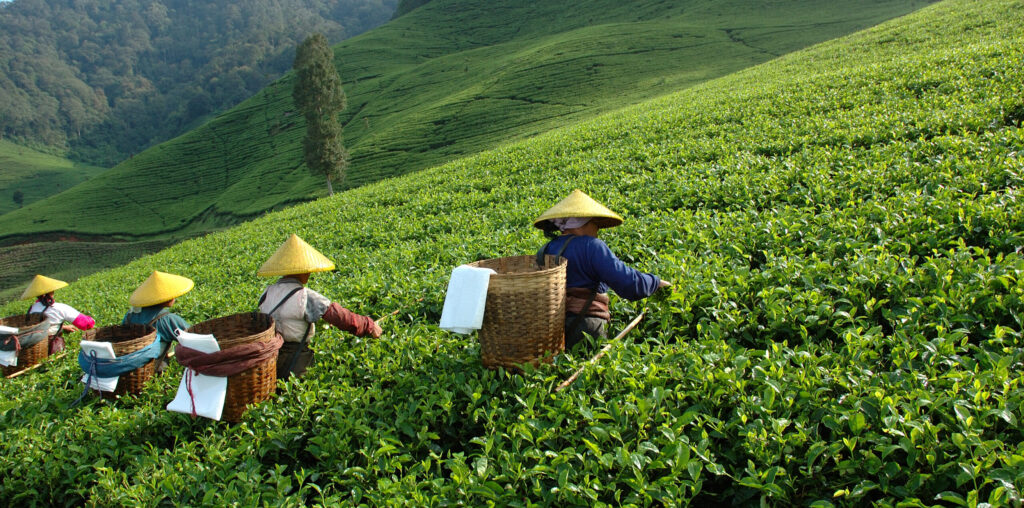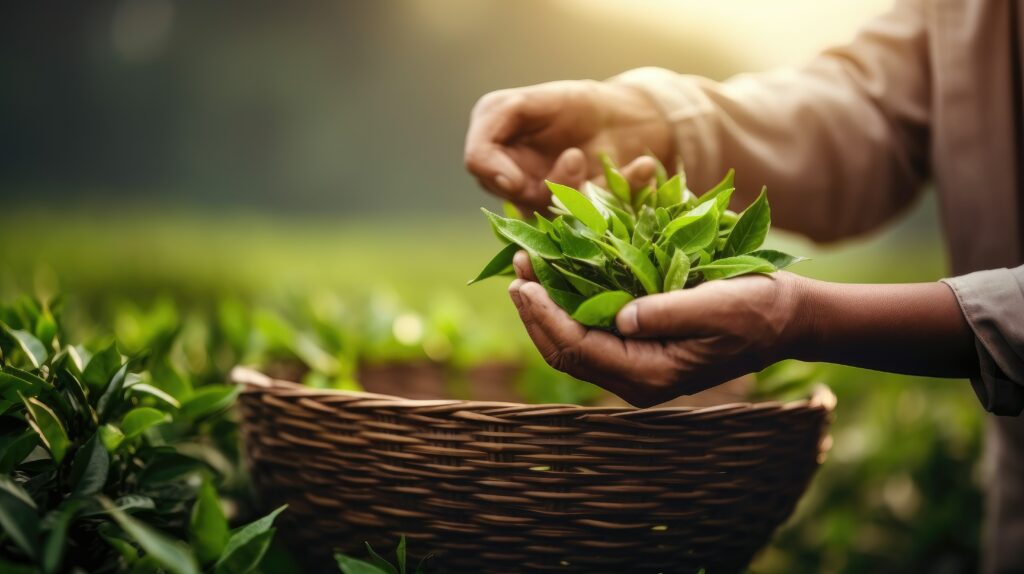
The harvesting of tea leaves is a meticulous process that requires careful timing and attention to detail. The tender, young shoots, commonly referred to as “flushes,” are the most sought after. Depending on the type of tea being produced, these flushes are typically plucked every 7 to 14 days during the growing season.
The green tea’s first flush harvest is a moment of eager anticipation and jubilation. Taking place in early spring, usually from late March to mid-April, this harvest captures the tender young leaves and buds. The leaves are at their peak of freshness, delivering vibrant green hues and a lively flavour profile with floral notes, a crisp astringency, and subtle sweetness.
While green tea is often associated with the first flush, some regions also produce a second flush during the summer months, typically from May to June. The leaves harvested during this season offer a slightly more mature profile with a fuller body and nuanced flavours.
In certain regions, a third flush harvest occurs in the autumn, typically from September to October. While not as common as the spring and summer flushes, autumn-harvested green teas exhibit a different character, often with more pronounced earthy and vegetal notes.

Hand plucking is the traditional and often preferred method for harvesting high-quality tea. Skilled workers carefully pluck the tender leaves and buds by hand, ensuring only the topmost and most delicate parts of the tea plant are harvested.
Advantages: Selective picking allows for the collection of the finest leaves, contributing to the superior quality of the tea. It is particularly crucial for premium teas like first flush and specialty varieties.
Disadvantages: Labor-intensive, time-consuming, and can be more expensive compared to machine harvesting.
Machines equipped with specially designed shears or clippers are used to harvest tea leaves. These machines are guided over the rows of tea bushes, mechanically cutting the leaves.
Advantages: Faster and more cost-effective, especially for large-scale production. Can cover a larger area in a shorter time.
Disadvantages: Lack of selectivity can result in the inclusion of more mature or undesirable leaves. May not be suitable for certain premium teas that require meticulous plucking.
Spring (First Flush): The pinnacle of white tea harvesting occurs in early spring, mirroring the first flush of green and black teas. The leaves are plucked during this period, typically from late March to mid-April, when they are at their most tender. The result is a delicate, minimally processed tea that showcases the purity of the young buds and leaves.
Summer (Second Flush): While less common, some regions produce a second flush of white tea during the summer months (May to June). The leaves harvested at this time may have a slightly more mature profile compared to the first flush but still maintain the gentle and nuanced qualities characteristic of white tea.
Spring (First Flush): The green tea’s first flush harvest is a moment of eager anticipation and jubilation. Taking place in early spring, usually from late March to mid-April, this harvest captures the tender young leaves and buds. The leaves are at their peak of freshness, delivering vibrant green hues and a lively flavour profile with floral notes, a crisp astringency, and subtle sweetness.
Summer (Second Flush): While green tea is often associated with the first flush, some regions also produce a second flush during the summer months, typically from May to June. The leaves harvested during this season offer a slightly more mature profile with a fuller body and nuanced flavours.
Autumn (Third Flush): In certain regions, a third flush harvest occurs in the autumn, typically from September to October. While not as common as the spring and summer flushes, autumn-harvested green teas exhibit a different character, often with more pronounced earthy and vegetal notes.
Spring (First Flush): Similar to green tea, the first flush is pivotal for black tea production. Harvested in early spring, these leaves, often including buds and young shoots, contribute to the delicacy and complexity of black teas. Notable examples include Darjeeling’s renowned muscatel-flavoured black teas.
Summer (Second Flush): Black teas from the second flush, harvested in late spring to early summer (June to July), are characterised by a fuller body, deeper flavours, and a distinct briskness. The leaves, having matured a bit more, offer a rich and robust infusion.
Autumn (Third Flush): In some regions, particularly those with distinct seasons, a third flush for black tea occurs in the autumn (September to November). These teas often display a unique character, balancing the robustness of second flush teas with the freshness of the first flush.